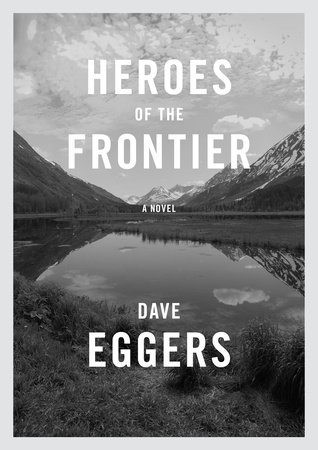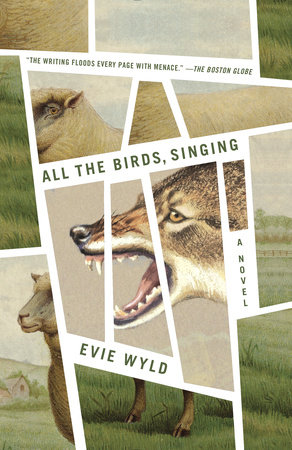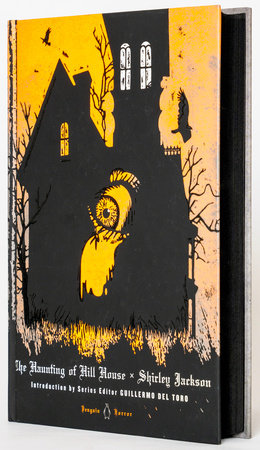My obsession with tiny houses began when I read about Dee Williams, who reassessed her life priorities after a medical emergency and built her own 84-square-foot home. She wanted to simplify, get rid of the clutter, focus on what really matters. This resonated with me, as someone who gets overwhelmed by all the stuff society tells me to want. I lingered on the question of what it would feel like to give up almost everything, and I kept thinking of that Janis Joplin lyric: Freedom is just another word for nothing left to lose.
I haven’t been brave enough to move into a tiny house myself. I have a husband, a toddler, 2 dogs, and 1.5 cats (1 cat just visits us for food occasionally; we have accepted his dislike of us). But, I did the next best thing by placing a character in a tiny house. This is one of the benefits of being a writer—telling your character, “You go first.”
In my novel Tiny, Nate and Annie Forester endure one of life’s cruelest tragedies when their 3-year-old daughter is hit by a car and killed. As time passes, Nate wants to move on and return to some version of normal, while Annie finds herself stuck in the quicksand of grief. Leaving a vague note for Nate, Annie disappears from her current life to live in a tiny house community, hoping that by containing herself in 100-square-feet, she can also contain her overwhelming sadness and find peace.
I love stories that involve characters in weird homes. I love the demands they make on my imagination. Here are some of my favorite books that feature unconventional homes that become characters in and of themselves.

The Light Between Oceans by M.L. Stedman
After fighting in WWI, Tom Sherbourne returns home and takes a job as the lighthouse keeper for Janus Rock, a small, desolate island off of Australia. He is alone on the island until he marries Isabel Graysmark, who comes to call the lighthouse home. Stedman writes:
“The isolation spins its mysterious cocoon, focusing the mind on one place, one time, one rhythm—the turning of the light.” It is in the midst of this isolation that Tom and Isabel endure misfortune and pain. You can almost feel the fog rolling in, right?

The Shining by Stephen King
The Overlook Hotel is fictional, but that doesn’t stop it from appearing in my nightmares every now and then. In the book, Jack Torrance, his wife, and his kids move into the isolated resort in the Colorado Rockies after Jack accepts the position as winter caretaker. There are way too many hallways and mysterious doors in this place, along with creepy apparitions and a general sense of doom.

Heroes of the Frontier by Dave Eggers
After losing her dental practice, Josie decides to leave everything behind and take her kids to Alaska. Home becomes a rattling, old RV: “The manufacturers had called the vehicle the Chateau, but that was thirty years ago, and now it was broken-down and dangerous to its passengers and all who shared the highway with it.” It’s hard not to develop fondness for The Chateau as Josie and her kids drive through the state, encountering various adventures—and wildfires.

California by Edan Lepucki
In this post-apocalyptic story, Cal and Frida flee Los Angeles, one of many cities that has fallen to shambles, and make their home in a shack in the wilderness of Northern California. Cal is quite content with their new life, away from civilization, but when Frida discovers she’s pregnant, she wants to seek out the support of a community. When they leave for the settlement they’ve heard about, their marriage and their lives are forever changed.

My Abandonment by Peter Rock
Based on a true story, this book (that became the movie Leave No Trace) is about a 13-year-old girl and her father, living in a dug-out cave deep inside Forest Park, a 5,000-acre nature preserve in Portland, Oregon. Their existence is simple—they wash in a nearby creek, they store perishables at the water’s edge, they tend a garden, they keep a library of sorts. This simplicity is changed forever when a jogger discovers them.

All the Birds, Singing by Evie Wyld
Jake Whyte is living on her own in an old farmhouse on a creepy, isolated island off the coast of Britain. Amidst the rain and wind, her sole companions are her dog (named Dog) and the 50 sheep she tends. The eerie setting of this book evokes so much feeling—a true testament to beautiful writing.

Cruel Beautiful World by Caroline Leavitt
Sixteen-year-old Lucy Gold runs away with her high-school teacher, William Lallo, thinking he is offering her freedom from her boring, unsatisfying life. Lucy’s romantic idea of freedom contrasts with the rundown one-story brown clapboard house that William offers as their home. Lucy has her doubts when she sees the house, but when William asks her, “Can you be happy here?” she can’t help but say, “Of course I can be happy.” Spoiler alert: The claimed happiness doesn’t last.

The Haunting of Hill House by Shirley Jackson
I agree with the critics who call this one of the best literary ghost stories of the 20th century. Hill House is literature’s classic haunted mansion, and Jackson’s description of it gives me chills every time I read it:
“Hill House, not sane, stood by itself against its hills, holding darkness within; it had stood for eighty years and might stand for eighty more. Within, walls continued upright, bricks met neatly, floors were firm, and doors were sensibly shut; silence lay steadily against the wood and stone of Hill House, and whatever walked there, walked alone.”
The post 7 Weirdest Houses in Literature appeared first on Electric Literature.
Source : 7 Weirdest Houses in Literature














